Hiromi Murao likes her men fragile, unthreatening, and kind of gloomy. For her first lookbook, unveiled last year, the Tokyo-based designer cast models intended to recall bishōnen, the Japanese ideal of the “beautiful youth”: an androgynous, fine-boned male crafted to appeal to the female gaze. With their slight builds and nerdy spectacles, Murao’s delicate characters exist somewhere between reality and the pages of a shōjo manga, a genre of manga aimed at young women.
“I used to draw beautiful boys all the time,” she says over a phone call from Tokyo. “I used to want to be a shōjo manga artist.” As Murao left school and enrolled in Tokyo’s University of the Arts, however, she realised that the soft masculinity presented on the pages of her beloved comics didn’t gel with reality. “I became really conscious of how categorised we are in society, and that men feel this pressure to be macho,” she says. It was only after she graduated and began attending Coconogacco (a trailblazing fashion school in Tokyo founded in 2008 that encourages its students to explore their individuality) that she felt comfortable enough to revisit her old hobby. “The people at Coconogacco took my work in a positive way, like they understood me,” she says. “It reminded me of the feelings I had drawing manga as a kid, and I found the fun in it again.”
Murao imagines her menswear as line-drawings that, instead of containing a character on the page, contour against a real body. Her tailoring subverts traditional suiting codes, with tight-fitting silhouettes crafted from stretchy suit fabric, accentuating the form underneath. A pair of tailored briefs in glen check, complete with peak lapels at the hips, nods to conventional masculinity while twisting it into something more revealing and delicate. She describes her muse as “a guy who is very thin, has no muscles and looks weak. He might be someone quiet, introspective and kind of sad.”
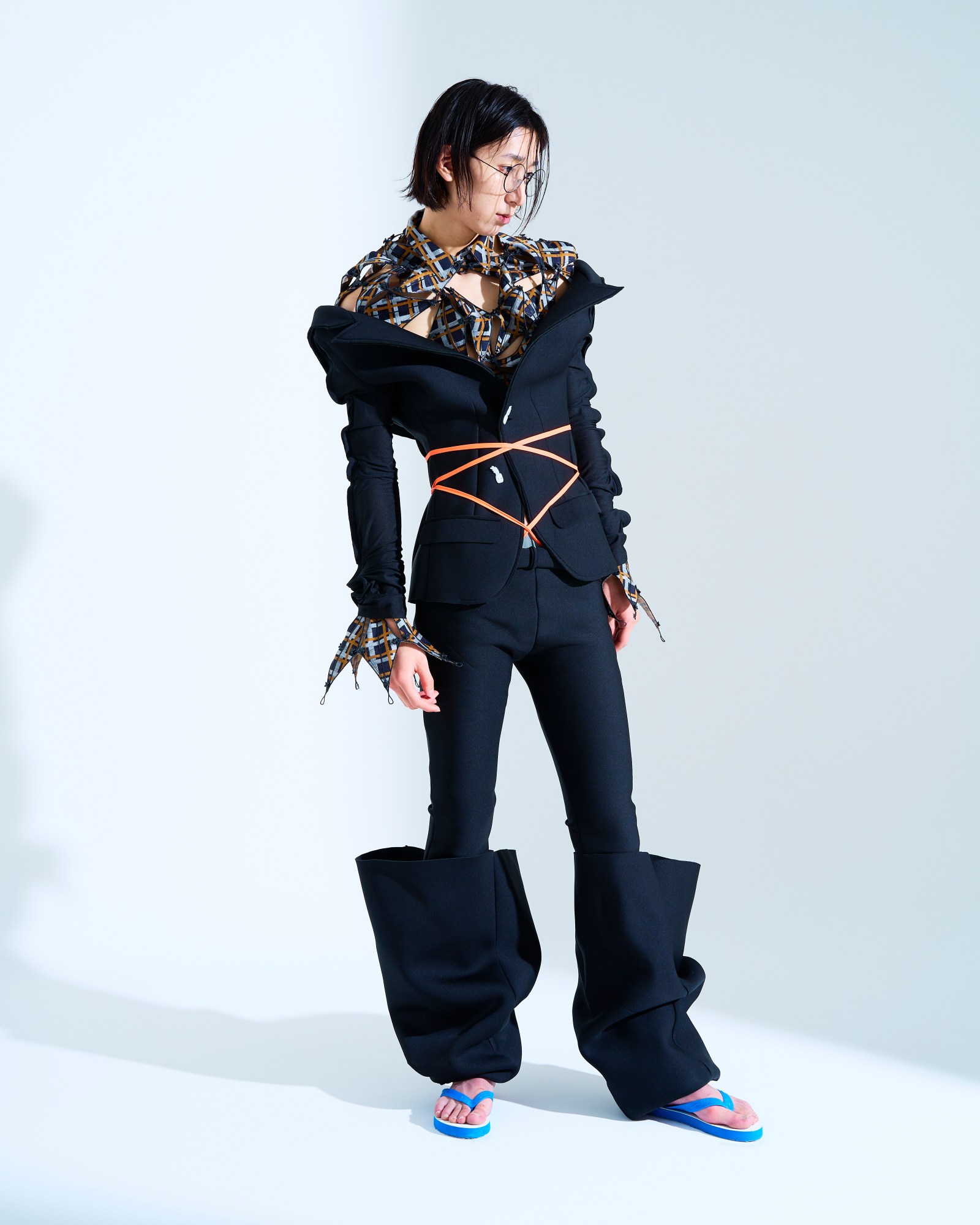
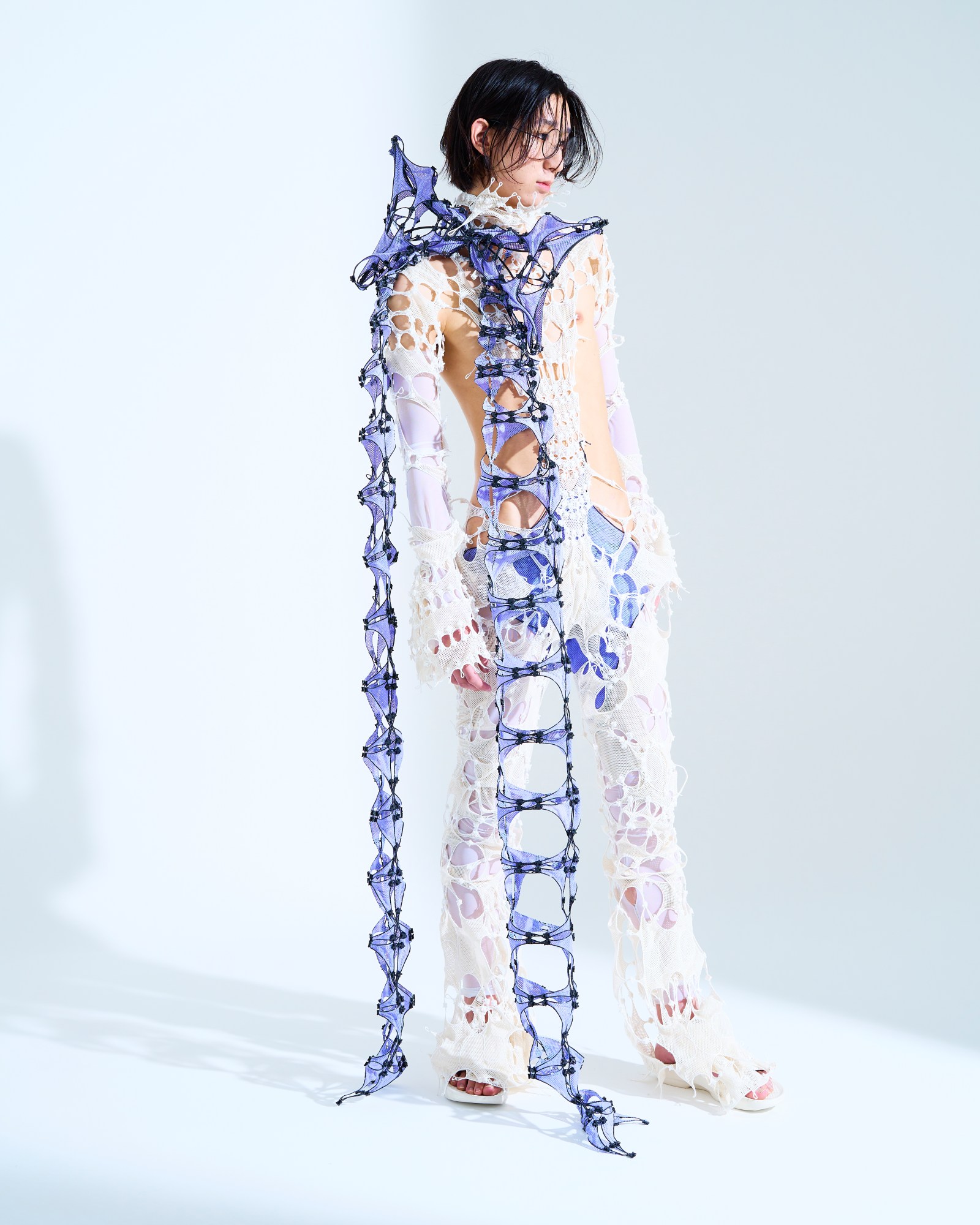
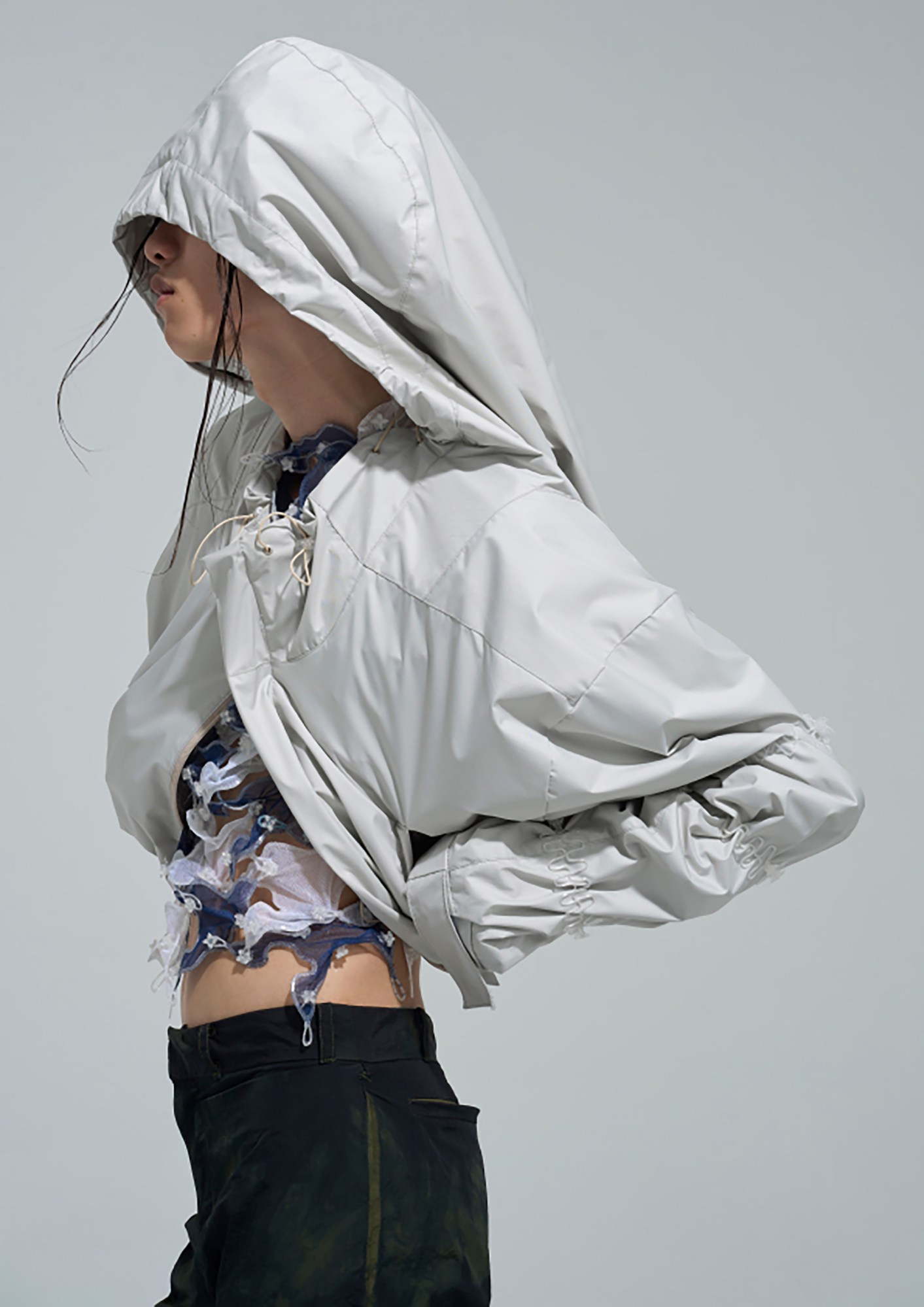

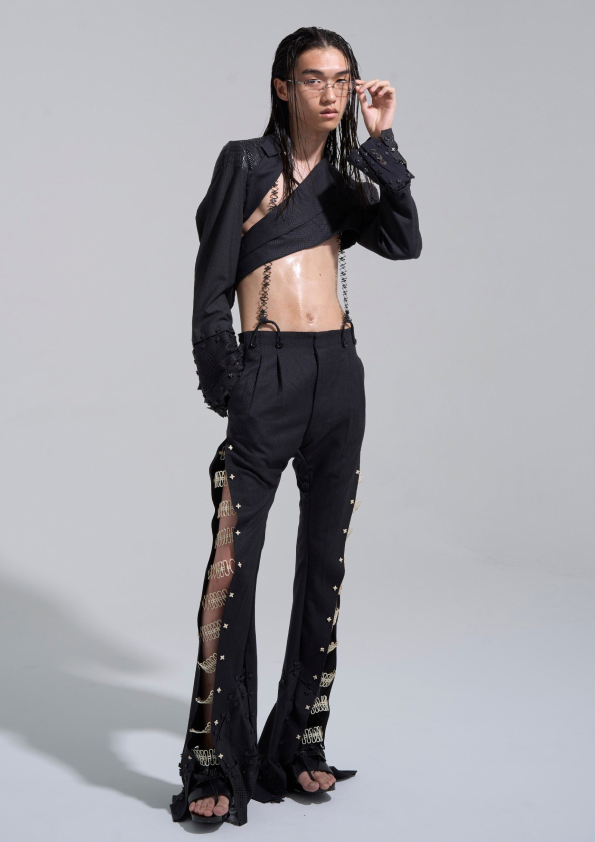
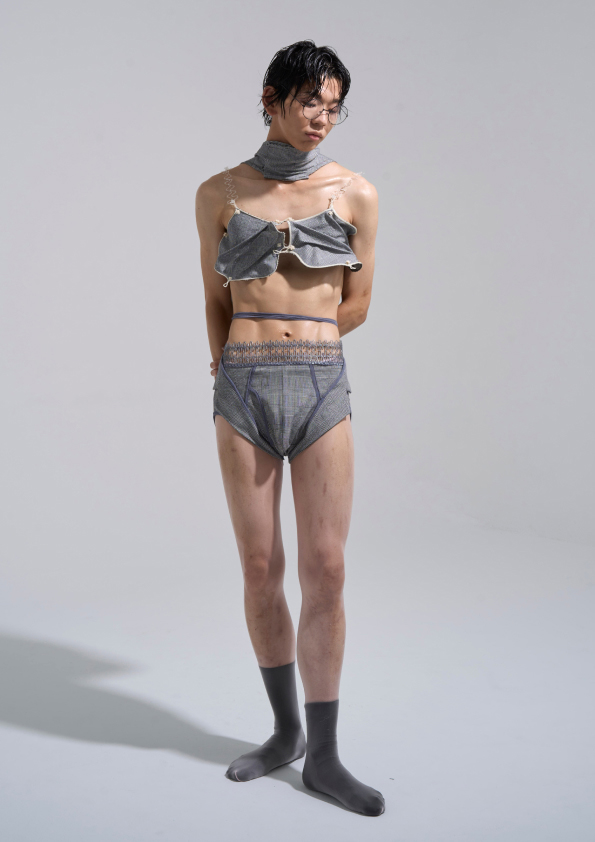
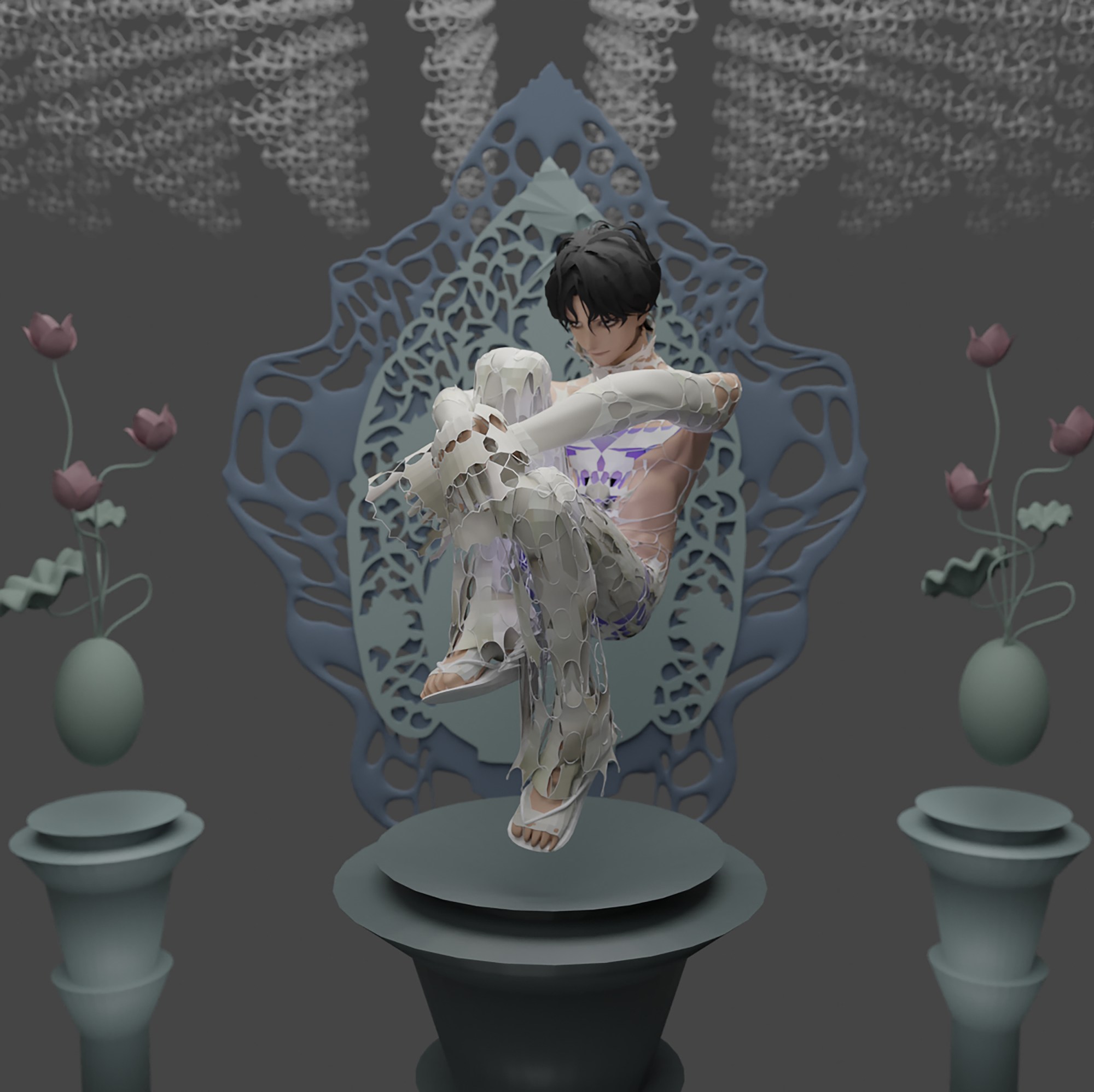







Alongside building her brand, the 30-year-old designer works at the tech and gaming company DeNA, where she picked up the technological knowhow that helps her experiment with shape and texture in her designs. A blazer might be scattered with systematic patterns of laser-cut holes across sharp tailoring, while another will wrap asymmetrically and bondage-like across the chest. Most striking of all are her overalls, with suits so deconstructed that they appear like webs, with 3D-printed rubber chains that coil around the body like strands of DNA. Others show peeks of bare skin in unpredictably intimate places, like the hip bone or the middle of the shoulder blades. “I make these slits to reveal the body, but I always want to do it in a way that looks skilled and technical,” she says.
The well-dressed crowds riding the Tokyo metro also provide Murao with plenty of inspiration for her designs. “I do a lot of people watching and look at what’s popular with college students,” she says. “I go back and forth between the pictures I draw and reality. Right now, I’m trying to make outfits that look fashionable and don’t feel overtly ‘manga’.” Murao is yet to release a full collection, but will begin stocking her clothes in early 2025 as part of a pop-up at Dekay, an underground boutique in Shibuya that showcases Japan’s up and coming designers.
In Japan, where the male figures depicted in shōjo manga are a fantasy confined to the page, Murao’s female gaze-focused designs provide a new lens on menswear. “It’s taken a lot of courage for me to release something like this in Japan, but I think there must be other people out there who also feel like they can’t be themselves,” she says. “I hope it will give them some power.”
Text: Ashley Ogawa Clarke
